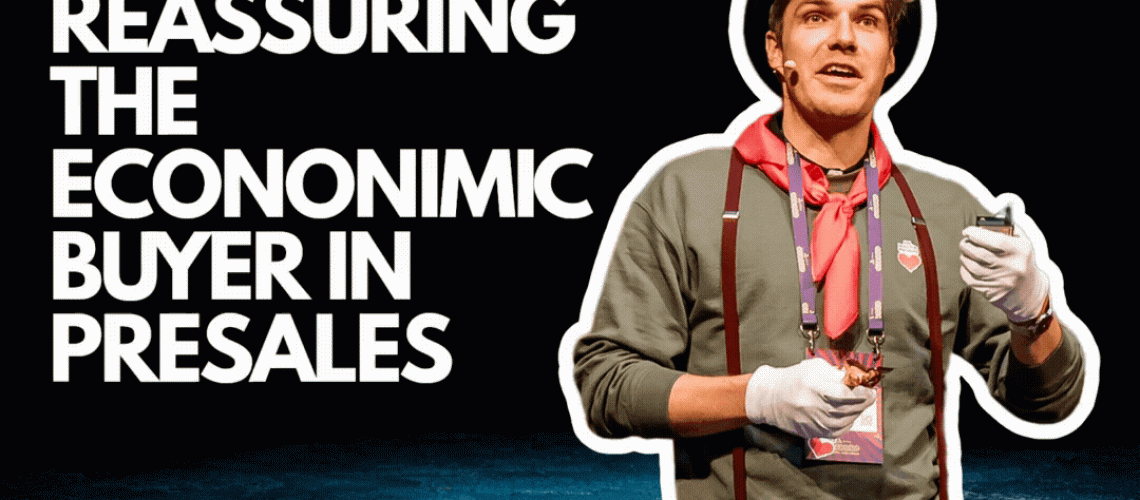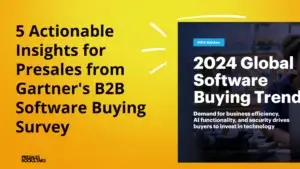Thinking Two Steps Ahead in Presales
Successful presales and solution engineers need to adapt a post-sales mindset in order to successfully guide their prospects from start to finish. Finish in this case does not mean the contract signature, but the go-live date of your customers; or even the date by when they need to achieve their objectives.
Post sales and presales might sound counterintutive; one might even call it post-post sales. But this post-sales perspective focuses on ensuring that the economic buyer feels confident that their investment is future-proof.
It’s about making sure that the money they invest is sustainable and ready to handle future and arising challenges.
The Longevity of SaaS Investments
Even in the SaaS and subscription business, where terminating an agreement might seem easy, companies often plan for an average of seven years of usage when procuring a new tool. This long-term view is driven by several factors:
- Total Cost of Ownership (TCO): Only about one-third of the total cost of ownership is tied to paying the SaaS fee to the vendor. The rest goes into supporting staff, change management, and educating people.
- High Switching Costs: Even for relatively „easier“ SaaS products, switching costs can be significant. The effort involved in onboarding, training, and integrating a new tool makes the decision to switch a weighty one.
Future-Proofing Your Investment
To assure the economic buyer of the sustainability and future readiness of their investment, consider the following:
- Adapting to Technological Changes: Ensure that the solution can incorporate emerging technologies like generative AI. Discuss how the product is designed to evolve and integrate new capabilities that will shape the future.
- Compliance with Future Policies: Highlight how the solution will adapt to pending policies and regulations, such as changes in data privacy laws. Show that you are already familiar with these changes and are proactively working to integrate them into future updates.
- Ongoing Innovation: Emphasize the vendor’s commitment to continuous improvement and innovation. Reassure the buyer that the product will not become obsolete but will evolve with industry advancements.
Timing Your Discussion
Timing is crucial when introducing future-proofing concepts. It’s important not to bring this up too early in the sales process.
Ideally, discuss it at the very end of the customer’s decision-making process when there are only a few vendors left.
Bringing it up too early can shift focus away from the main challenges and lead to discussions about roadmap items that, while interesting, are not essential for solving the customer’s primary problems. Keep it simple for as long as you can.
Strategic Engagement with the Economic Buyer
Once you engage with the economic buyer, you can start to tease certain things:
- Proactive Mention of Policy Changes: Casually mention pending policy changes they might not be aware of. Show that you are thinking two steps ahead, making them feel comfortable with your knowledge and preparedness.
- Tie to Strategic Initiatives: Align your offering with other strategic initiatives. Many large companies are investing heavily in generative AI. If you can logically and reasonably demonstrate that you can or will incorporate generative AI to make your customers‘ lives easier, you can use this to ease the economic buyer’s uncertainty.
But remember, don’t do this too early. Focus on the fundamentals before making things more complex and hypothetical.
Building Confidence
By addressing these points, you build confidence that the investment is not just for the present but also for the future. Emphasize that the chosen solution is designed to evolve with the company, ensuring that their investment continues to provide value and support their business goals over time.
Conclusion
Investing in new software is a significant decision that impacts a company well beyond the initial purchase. By providing clear, forward-looking information and demonstrating the sustainability of the investment, you can reassure the economic buyer and ensure they feel confident in their decision. This approach not only secures the sale but also fosters a long-term partnership built on trust and mutual success.





